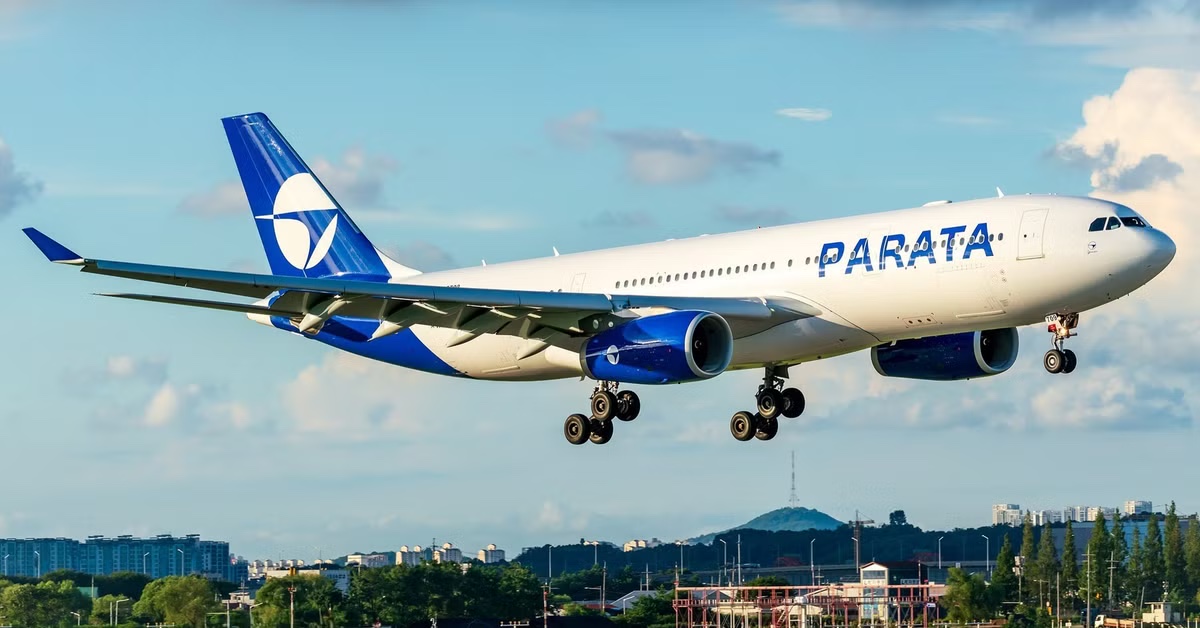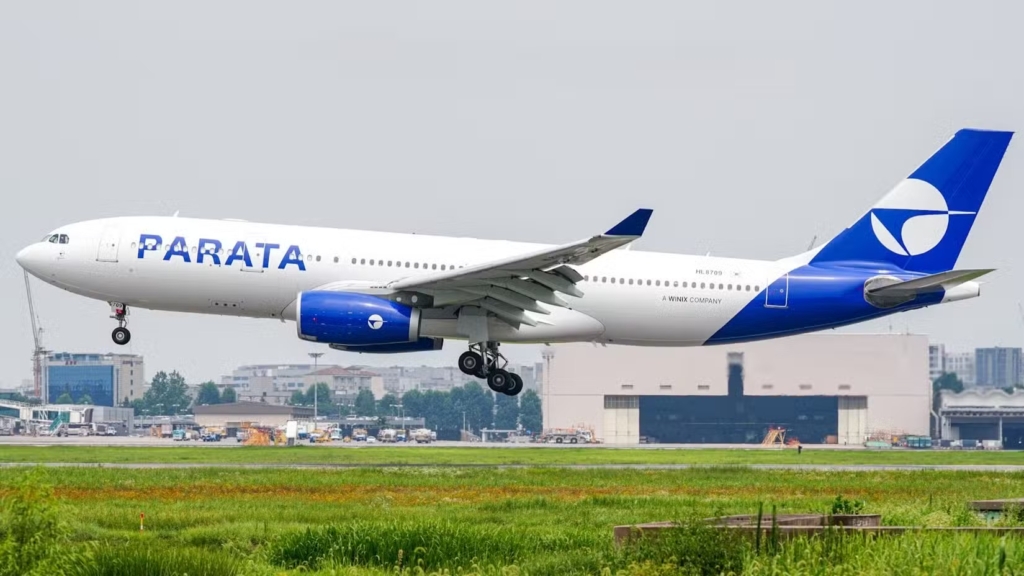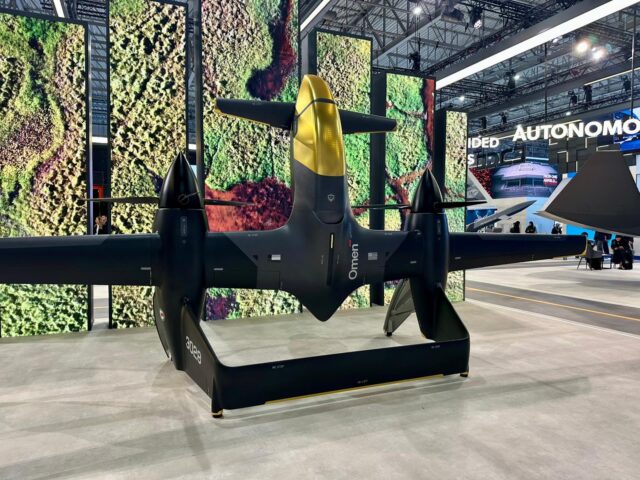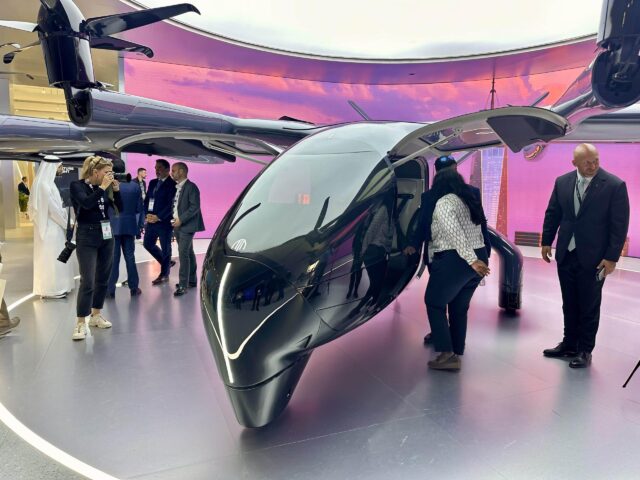Meet Parata Air, South Korea’s new low-cost airline that wants to fly to the US

Korean low-cost carrier Parata Air is making a bold move into long-haul flights. Within weeks of operating its first commercial flight, the airline has applied to the US Department of Transportation (DOT) seeking permission to begin scheduled and charter services between South Korea and the United States.
The application, filed under Docket DOT-OST-2025-1922, requests a foreign air carrier permit to serve routes from Seoul Incheon (ICN) to Los Angeles (LAX) and Las Vegas (LAS) beginning March 29, 2026. The carrier plans to use its Airbus A330-200 aircraft for the trans-Pacific flights.
While its name may evoke thoughts of an Indian flatbread, in Korean, parata (파랗다) means ‘blue.’
From Fly Gangwon to Parata Air
Parata Air is a reincarnation of Fly Gangwon, a small regional carrier that launched in 2019 from Yangyang Airport on South Korea’s northeast coast. Fly Gangwon served domestic leisure routes to Jeju and Busan but was brought down by the pandemic-induced collapse in demand, suspending operations and entering court-led rehabilitation in 2023.

In 2024, Korean appliance manufacturer Winix Co. acquired Fly Gangwon’s assets and rebranded the airline as Parata Air. It aims to operate a hybrid carrier model between a full-service carrier and a low-cost carrier.
After securing its Air Operator Certificate (AOC) again in September 2025, Parata launched its first post-rebrand commercial flight on September 30, 2025, with an A330-200 (HL8709) operating between Seoul Gimpo and Yangyang.
Parata Air’s US ambitions
Parata’s DOT filing lays out plans for regular passenger, cargo, and mail service between Korea and the U.S., starting with ICN–LAX and ICN–LAS routes.
Parata’s strategy targets the high-growth leisure segment, leveraging lower fares to compete with established full-service carriers, Korean Air and Asiana Airlines. The filing requests broad authority under the US–Korea Open Skies agreement, allowing potential expansion to other destinations.
Parata Air’s fleet and passenger experience positioning
Parata Air currently operates two Airbus A330-200s configured for medium- to long-haul service, and one A320-200 for domestic and short-haul routes. The airline is expecting delivery of a second leased A320-200.
Its branding and marketing position the airline as a “hybrid” model, offering paid add-ons, widebody comfort, and premium-light cabin options while maintaining a lean, low-cost fare structure.
The airline offers a Business Smart class, featuring reclining seats, premium chef-prepared meals, and ground perks, including lounge access. On its website, Parata Air shows two alternative A300-200 configurations.
A 294 passenger A330-200 has 49 Comfort Plus seats (19.5” wide with 35” pitch) and 245 Comfort (main cabin) seats (17.5”-18.5” wide with a 33” pitch). The 260 passenger variant has 18 Business Smart seats (20.5” wide with a 74” pitch) arranged 2-2-2 across, and 242 Comfort seats (17.5” wide with a 32” to 33” pitch) arranged 2-4-2 (2-3-2 in the last four rows).
While it currently operates only one A320-200, the airline shows two alternative A320-200 configurations on its website. One is a single class cabin with 174 seats (18.5” wide and 28” to 29” pitch) arranged 3-3.
The second is an 168-seat variant with a two-class cabin including 12 Comfort Plus seats (19.5” wide with a 32” pitch) arranged 2-2 with a separation between all seats. The 156 Comfort seats are 18.5” wide with a pitch ranging from 28” to 29” and arranged 3-3.
Taking advantage of the outbound tourism rebound
Korean outbound leisure travel continues to rebound strongly. As reported by Yanolja Research: “In the first half of 2025, the number of Koreans travelling abroad was estimated at 14.564 million, nearly returning to pre-pandemic levels.”
The firm finds that “demand for overseas travel following COVID-19 is gradually becoming entrenched.” Outbound travel had “dropped to 9.931 million in the first half of 2023—33.8% lower than the 15.008 million recorded in 2019.”
As a newly revived entrant to the market, Parata Air aims to capture travellers seeking affordable transpacific options with a touch of premium service.
Featured Image: Parata Air
















